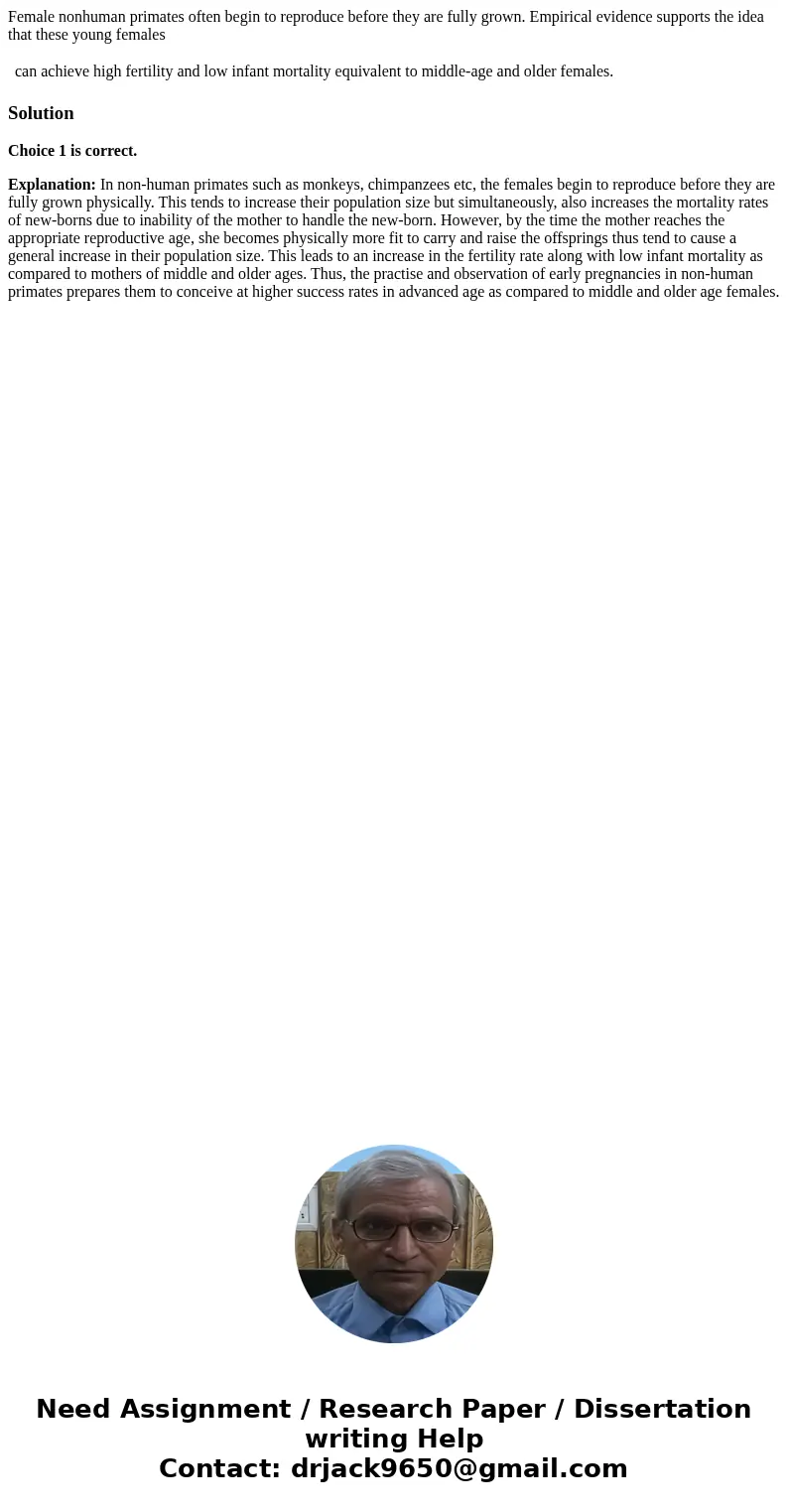Female nonhuman primates often begin to reproduce before the
Female nonhuman primates often begin to reproduce before they are fully grown. Empirical evidence supports the idea that these young females
| can achieve high fertility and low infant mortality equivalent to middle-age and older females. |
Solution
Choice 1 is correct.
Explanation: In non-human primates such as monkeys, chimpanzees etc, the females begin to reproduce before they are fully grown physically. This tends to increase their population size but simultaneously, also increases the mortality rates of new-borns due to inability of the mother to handle the new-born. However, by the time the mother reaches the appropriate reproductive age, she becomes physically more fit to carry and raise the offsprings thus tend to cause a general increase in their population size. This leads to an increase in the fertility rate along with low infant mortality as compared to mothers of middle and older ages. Thus, the practise and observation of early pregnancies in non-human primates prepares them to conceive at higher success rates in advanced age as compared to middle and older age females.

 Homework Sourse
Homework Sourse